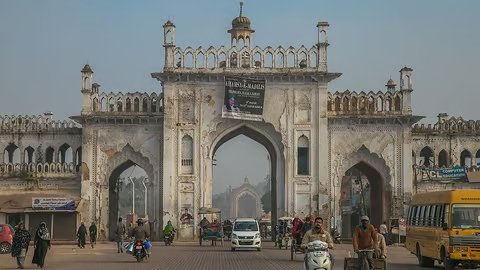Reviving Heritage: Communities Building for a Brighter Future
Written by Suvro Sanyal.
The Khasi Community in Meghalaya:
The Khasi people are the native group of Meghalaya, numbering about 1 million in India’s north-eastern state. A unique feature of this community is that they follow the matrilineal system of descent and inheritance, meaning the youngest daughter inherits, children take their mother’s surname and when no daughters are born to a couple, they adopt a daughter and pass their rights to property to her.
In Udem village weaving initiatives have been set up by the Khasi women using only natural plant-based colour. Weaving Ryndia is an art passed down through the generations and treated as an occupation, providing livelihood to families in the region. Traditionally a hand-spun, hand-woven fabric, worn with pride by both the men and women in Meghalaya, the fabric in its un-dyed off-white state, or maroon and mustard plaid design, is a cultural symbol of the Khasi people. “Eri Silk” is also known as ‘peace silk’ as the production methodologies are considered to be non-violent. Weaving is primarily done by women. “Eri Silk” in Meghalaya is produced from start to finish by women working from home or in clusters. Women supporting women has built an ecosystem that is thriving.
The Juma Community:
The Juma Indigenous Land has 38,351 hectares and was demarcated and homologated in 2004. The tribe is located on the banks of the Assuã River, more than 1,100 kilometres from Manaus, capital of Amazonas.

In the 18th century, the Juma group had about 15 thousand indigenous people. Today there are only four left. Historically the people were decimated by gold miners, rubber tappers and by all the diseases that arose after the contact with the white man. In 1998, with a very small number, the Juma were taken from their original area to the Alto Jamari tribe of the Uru-Eu-Wau-Wau people. Because they were a completely different ethnic group, although they spoke the same language, they suffered from cultural shock and felt marginalised, apart from their homesickness. They had eventually returned to the Juma territory in 2013.
Despite their numbers, the Juma people keep their culture alive. One of the rituals still practiced is the Feast of the Young Girl, an event that marks the beginning of adult life for the woman. In addition to the invasion of hunters, they suffer from the poor assistance of public agencies.
An estimated 100 remained in 1943. A massacre in 1964 left only six, including Mr. Juma, who, like many Indigenous Brazilians, used his tribe’s name as his surname. In 1999, with the death of his brother-in-law, became the last remaining Juma male. The tribe’s extinction was assured. Aruká is 82 years old. He and his three daughters are the last of the ethnicity. As there are no more indigenous people of the same people for new marriages, this is the final family of the Juma. Mr. Juma died on 17th February, 2021 in a hospital in Pôrto Velho due to Covid 19, the capital of Rondônia state, in western Brazil. He was believed to have been between 86 and 90. The same was reiterated by his grandson Puré Juma Uru Eu Wau Wau.
The Pokfulam Community of Hong Kong:
Pokfulam is the only village left on Hong Kong Island, perching on a hillside on the west side of the island, as a living witness to Hong Kong’s prosperous industrial and agricultural development. The Pokfulam Village showcases the power of local community efforts in preserving heritage and creating meaningful connections with the past.
In 1885, it was home to the Dairy Farm Group, which was set up to provide Hong Kong with fresh milk. The Old Dairy Farm set up a ranch in Pokfulam which served as a base for milk production in the area. Villagers grew up near the cattle, the surrounding facilities acted as an experimental playground provided them with unique childhood experience and formed a deep connection to the land. Following the closure of the ranch, Pokfulam Village faced the imminent threat of urban development encroaching upon its land. This posed a significant challenge to the villagers, as it risked eroding their cherished way of life and the unique character of the village. In the order to reinstate along-with upheld the century old cultural sovereignty of the Pokfulam Village & Dairy Farm, the Pokfulam Village Cultural Landscape Conservation Group was founded in 2009.
Hard work of the community finally paid off as Pokfulam Village was included in the 2014-2016 World Heritage Building Foundation watch list. Villagers then partnered with Caritas – Hong Kong for revitalisation of the Senior Staff Quarter of the old Dairy Farm project. Their campaign and over ten years efforts to preserve their cherished way of life have paid off, leading to the opening of The Pokfulam Farm to the public in 2023.
The Pokfulam Farm is far from an ordinary cattle ranch. This is a platform for visitors to immerse themselves in the nature and cultural context of the landscape. Through exhibitions, guided tours and workshops, visitors can get to know about the past of old Dairy Farm and explore alternative ways of life. More importantly, public awareness towards conserving the natural environment and fostering a sense of respect for mother nature are bolstered. While the Dairy Farm no longer exists in Pokfulam, old cowsheds can be seen on the hillside.
The writer, while exploring the innumerable aspects of community building along with the relentless contributions of the influencers & community builders, has been able to identify the predominant reasons for the extinction of communities – those which were apparently transient.
In the study of psychology, extinction is when a behaviour decreases or disappears even when the conditioned stimulus is presented. Spontaneous recovery is when the conditioned response randomly recovers after a period of extinction.
The summary principle of extinction is that behaviour weakens in extinction in part because of (i) generalisation decrement and (ii) new learning that is driven by prediction error. Generalisation decrement occurs in extinction because the stimulus conditions change when extinction begins.
According to modern conceptions of the learning process, new learning is driven by “prediction error,” a behavioural mechanism that is embodied in he degree of associative change that occurs on any conditioning or extinction trial is governed by the difference between what is predicted by all the cues present on the trial and the US that actually occurs. The discrepancy between what is predicted and what occurs is the “prediction error”.
When a procedure that leads to a behaviour – enticing ignorism, can be an extinction-based procedure, it is important to identify the function of the behaviour through a functional assessment. If the function of the behaviour was to end up being ignored by others, then instead of implementing an extinction procedure one should be implementing a reinforcement-based procedure and inadvertently strengthening the behaviour, meaning it will occur more frequently in the future and will certainly not become “extinct”.
Indian Communities across places, religions –
- AMUL – Arguably, the world’s largest community which has stood strong & firm against all tyrants was institutionalised in 1946 on the December, 19th. Amul is an acronym (Anand Milk Union Limited) of the Indian Multinational Cooperative Society named Gujarat Milk Marketing Federation based in Anand, Gujarat. It is under the ownership of Gujarat Cooperative Milk Marketing Federation Limited, Department of Cooperation, Government of Gujarat. It is controlled by 3.6 million milk producers.
Tribhuvandas Kishibhai Patel founded the Kaira District Co-operative Milk Producers Union to counterfeit the exploitation of small dairy farmers by traders and agents. At the time, milk prices were arbitrarily determined, giving Polson an effective monopoly in milk collection from Kaira and its subsequent supply to Bombay (Mumbai). Frustrated with the trade practices (which they perceived as unfair), the farmers of Kaira, led by Tribhuvandas Patel, approached Sardar Vallabhbhai Patel, who advised them to form a cooperative. If they did so, they would be able to directly supply their milk to the Bombay Milk Scheme instead of working for Polson.
Following a meeting in Chaklasi, the farmers formed the cooperative and resolved not to provide Polson with any more milk. The Kaira District Co-operative Milk Producers Union began with 02 village dairy cooperative societies, and 247 litres of milk.
Milk collection was decentralised, as most producers were marginal farmers who could deliver, at most, 1–2 litres of milk per day. Cooperatives were formed for each village. By June 1948, the KDCMPUL had started pasteurising milk for the Bombay Milk Scheme.
In 1970, the cooperative spearheaded the “White Revolution” of India. In the process of combining forces and to expand the market while saving on advertising and avoiding competing against each other, the Gujarat Co-operative Milk Marketing Federation Ltd., an apex marketing body of these district cooperatives, was set up in 1973. The Kaira Union, which had the brand name Amul with it since 1955, transferred it to GCMMF. Technological developments at Amul have subsequently spread to other parts of India.
Amul business model is a three-tier cooperative business model:
- At the first tier, are millions of milk producers, primarily farmers, who supply milk to the organization.
- The second tier, comprises the cooperative society, represented by the Gujarat Cooperative Milk Marketing Federation Ltd. (GCMMF), which handles processing, packaging, marketing, and distribution.
- The third tier, involves retailers and consumers who receive Amul’s dairy products through a network of retail channels.
This model emphasises cost efficiency, quality control, inclusive growth, and brand building. Amul’s cooperative structure ensures fair pricing for farmers, promotes their empowerment, and enables revenue generation through the sale of diverse dairy products.

Writer Suvro Sanyal
Mavericknews30 has launched a series of articles on community building, sharing insights and success stories. Stay tuned for the next article as we explore how to create stronger, more connected communities!
Log on : www.mavericknews30.com
Follows us on : Twitter @mavericknews30
YouTube : @MarvickNews30
Danish Government Allocate Funds For the Purchase of a Ship to Strengthen the Monitoring of Critical Underwater Infrastructure.
Copenhagen; December 2025: Based on updated military recommendations from the Danish Defen…




















